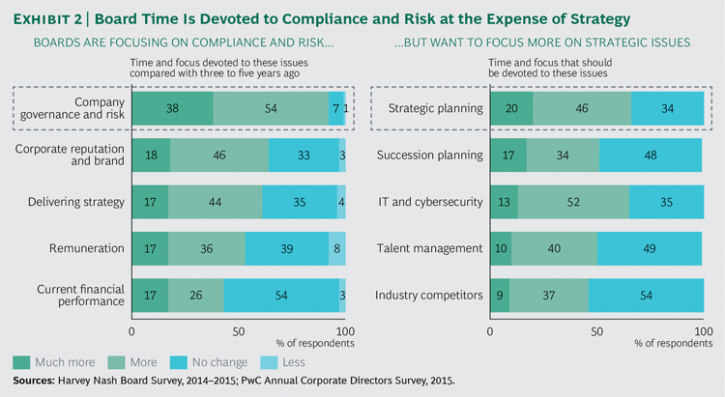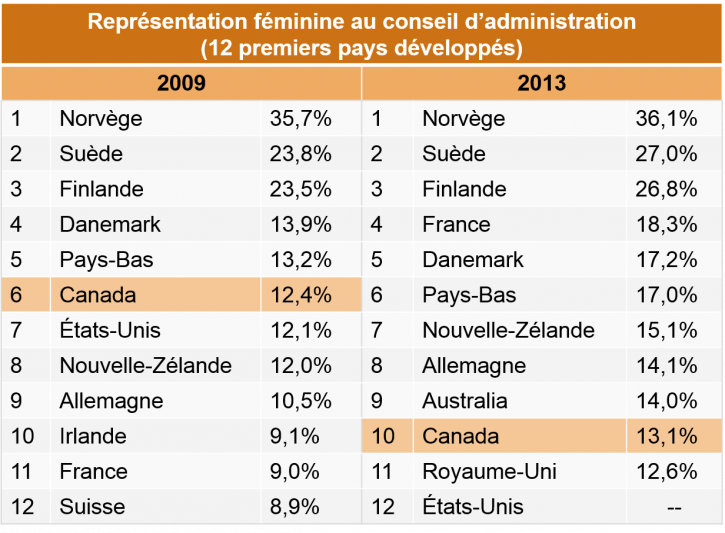mission et composition du conseil d’administration | Page 12
Gouvernance mission et composition du conseil d'administration normes de droit place des salariés
I’m alright, Jack: worker representation on boards
Ivan Tchotourian 15 septembre 2016
Dans Compliance Week, Paul Hodgson publie une tribune sous ce titre favorable à l’entrée des salariés dans les conseils d’administration (« I’m alright, Jack: worker representation on boards », 13 septembre 2016).
Probably the most European of new Conservative Prime Minister Theresa May’s fairly European corporate governance reform proposals is the proposal to have employee/worker representation on the board. It’s a concept unknown outside the European Union, and the United Kingdom is one of the few EU countries that has not yet introduced it.
But the idea was so far off anyone’s governance radar, except for the Trades Union Congress, that the proposal has taken almost everyone else by surprise, including companies, advisers, investors, and proxy advisers.
À la prochaine…
Ivan Tchotourian
état actionnaire Gouvernance mission et composition du conseil d'administration Nouvelles diverses place des salariés
Alstom, une explication de la gouvernance s’impose !
Ivan Tchotourian 13 septembre 2016
Bonjour à toutes et à tous, l’entreprise française Alstom soulève un beau cas de gouvernance d’entreprise. En annonçant le transfert d’ici la fin 2018 de la production de trains et du bureau d’études de Belfort vers le site alsacien de Reichshoffen, Alstom semble avoir pris tout le monde de court.
Cette décision interpelle sur 2 points.
- Cette décision rappelle le rôle délicat de l’État lorsqu’il est actionnaire. Rappelant que l’État français est présent au conseil d’administration du groupe de transport. Dans le cadre des accords conclus entre l’Etat et Bouygues en juin 2014, l’Etat a signé un prêt de titres avec Bouygues jusqu’à la fin 2017, lui permettant d’exercer ses droits de vote dans Alstom à hauteur de 20%. L’Etat dispose en outre d’options d’achat lui permettant d’acquérir, s’il le souhaite, les titres actuellement prêtés par Bouygues.
- Cette décision a été prise et – surtout – communiquée dans d’étranges circonstances. L’annonce a été faite mercredi après-midi aux représentants du personnel alors que le matin même, Alstom annonçait un accord avec la SNCF sur le TGV du futur et assurait officiellement que le site de Belfort était retenu pour les locomotives. Depuis, la direction n’a donné aucune indication officielle, en dehors de l’explication du plan de charge insuffisant donnée aux représentants du personnel.
Je vous invite à écouter cette capsule-vidéo de 2 minutes (tirée du site L’Agefi.fr) qui résume de manière claire les questions de gouvernance d’entreprise que soulève Alstom : « Alstom, une explication de la gouvernance s’impose ».
À la prochaine…
Ivan Tchotourian
Gouvernance mission et composition du conseil d'administration place des salariés
Pour ou contre les salariés au CA ?
Ivan Tchotourian 12 septembre 2016
« Should boards include an employee representative? » de Richard Dunnett dans Director (12 septembre 2016) propose 2 points de vue radicalement différents sur la question.
- Oui pour Stefan Stern, directeur du High Pay Centre
Something is too often lacking from the conversation at board level: an eyewitness account from the shop floor. How easy it is to forget the perspective of ordinary employees, even in the middle of discussi
ons that will have a direct impact on their lives. ‘Consultation’ is, sadly, one of the most abused management terms. It makes practical sense to listen to the views of colleagues before taking decisions that affect them. So introducing the employees’ point of view into the boardroom, through employee representatives, must make sense.
- Non pour Jim Prior, P-DG de The Partners and Lambie-Nairn
The proposal betrays a fundamental misunderstanding of how companies work in its failure to distinguish between leadership and governance. In most large companies it is the executive leadership team that makes the decisions which most affect employees, not the board. Yes, corporate leaders should listen to employees but the role of the board should be to identify and act on situations where leaders fail to listen, not to do the listening for them.
À la prochaine…
Ivan Tchotourian
Gouvernance mission et composition du conseil d'administration
Un CA engagé ne doit pas négliger la stratégie… ce qui est souvent le cas !
Ivan Tchotourian 10 septembre 2016
bcg.perspectives publie un excellent article qui insiste sur le déséquilibre de l’investissement des membres du CA : conformité et risques sont priorisés au détriment de la stratégie (« Looking for Smoke Under the Door: The Case for an Actively Engaged Board »).
Voici la synthèse :
An actively engaged board provides the building blocks of good governance. Directors with deep knowledge of the business and the external environment are better equipped to offer advice, challenge management, and spot any warning signs. But creating a more engaged board is neither easy nor without risk. While an actively engaged board can be a great benefit to a company, an engaged board that is dysfunctional can be destructive. If the board’s operating model is not right, and if the directors are not aligned, the board can undermine management and create confusion.Chair, CEO, and NEDs all have a role to play.
The rules and practices of corporate governance impose on the board many constraints and competing demands. In the finite time available to deliberate and make decisions, the board’s agenda naturally gravitates toward the essential issues of the day: governance, regulation, compliance, and near-term decisions. Often the board’s attention to the long term is relegated to its participation in determining annual strategy. In many companies, this is a flawed process.
Notwithstanding the packed schedule of most board meetings, the experience and detachment of board members position the board to be an actively engaged catalyst for change. Such a board will be able to identify, interpret, and act upon weak signals inside and outside the business that indicate the need for change; it will be adaptable, changing its composition and operations to meet evolving needs; and it will balance the independence of position and mind required for oversight with the active engagement necessary to provide management with the benefit of its members’ experience.
À la prochaine…
Ivan Tchotourian
Gouvernance mission et composition du conseil d'administration normes de droit
La féminisation par la loi
Ivan Tchotourian 10 septembre 2016
Belle exemple d’imposition de la composition d’un CA que nous offre la Suède : bientôt 40 % de femmes devront siéger dans les conseils (« La Suède exige 40 % de femmes dans les CA des entreprises cotées », La presse.ca, 9 septembre 2016). La Suède rejoint donc le rang des pays ayant décidé de passer par la loi pour imposer la féminisation comme la France par exemple. Pour rappel, le Canada a choisi un chemin différent : une réglementation de type comply or explain avec les modifications au Règlement 58-101 sur l’information concernant les pratiques en matière de gouvernance.
Le gouvernement suédois va déposer un projet de loi pour imposer un quota de 40 % de femmes au conseil d’administration des entreprises cotées, sous peine d’amende, a annoncé vendredi le ministre de l’Industrie.
La nouvelle législation devrait rentrer en vigueur en 2017, mais les entreprises qui ne respectent pas les quotas ne seront sanctionnées qu’à partir de 2019.
En guise de comparaison, je vous glisse le résultat de l’étude suivante : GMI Ratings’ 2013 Women on Boards Survey.
À la prochaine…
Ivan Tchotourian
engagement et activisme actionnarial Gouvernance mission et composition du conseil d'administration
Changement de visage des actionnaires et émergence d’un nouveau paradigme
Ivan Tchotourian 15 août 2016
La professeure Dionysia Katelouzou publie une très belle étude sur SSRN : « Reflections on the Nature of the Public Corporation in an Era of Shareholder Activism and Shareholder Stewardship ». L’auteure y revient sur le mythe que les actionnaires seraient passifs et que la lecture contractualiste de l’entreprise serait pertinente. Comme elle le souligne, il y a eu un changement de paradigme depuis l’émergence des investisseurs institutionnels consacrant un « investor paradigm for corporate law ».
For the greater part of the twentieth century the role of shareholders within the public corporation has been conceptualized within the contractarian framework influenced by the neo-liberal emphasis on market efficiency. For the supporters of the contractual nature of the corporation, shareholders have in general been viewed as the main beneficiaries of corporate activity. Contractarianism goes further, dispelling the notion of shareholder ‘ownership’, and thereby relying on the efficacy of individual contracting and the constraining forces of various markets to control managerial discretion and reduce monitoring costs. Within this contractarian framework shareholders do not wish to be involved in the corporation’s management, nor do they gain any benefits from an active engagement, mainly because of the market efficacy to control managerial discretion and a series of legal and extra-legal obstacles to shareholders’ active involvement. There is, therefore, no a priori reason why shareholders should exercise control over managerial decision-making and any legally imposed reform to empower the monitoring role of shareholders is viewed as unnecessary and counterproductive. Through most of the twentieth century, this contractarian orthodoxy of the rather passive role of shareholders also coincided with practice.
My paper argues that these contractarian assertions in relation to the role of shareholders within the internal functioning of the public corporation do not hold anymore in the face of the rise in the holdings and influence of institutional investors in recent years.
À la prochaine…
Ivan Tchotourian
devoirs des administrateurs engagement et activisme actionnarial Gouvernance mission et composition du conseil d'administration
Contestation de Hecla : position des organismes de réglementation
Ivan Tchotourian 10 août 2016
Bonjour à toutes et à tous, merci au cabinet Osler de cette intéressante nouvelle portant sur les placements privés et leur rôle tactique comme moyen de défense dans le cadre du nouveau régime canadien d’offres publiques d’achat (« Les organismes de réglementation des valeurs mobilières rejettent la contestation de Hecla à l’encontre du placement privé de Dolly Varden »).
Dans une décision très attendue qui suit l’entrée en vigueur d’un nouveau régime canadien d’offres publiques d’achat plus tôt cette année, les organismes canadiens de réglementation des valeurs mobilières ont refusé de prononcer une interdiction d’opérations sur valeurs à l’encontre d’un placement privé d’actions par une société cible mis en œuvre à la suite de l’annonce d’une offre publique d’achat non sollicitée. Comme le sujet des tactiques de défense n’avait pas encore été abordé dans le nouveau régime d’offres publiques d’achat, cette décision (et, plus important encore, les motifs détaillés qui suivront) revêt un très grand intérêt pour les participants au marché qui lorgnent le paysage canadien des offres publiques d’achat.
À la prochaine…
Ivan Tchotourian


